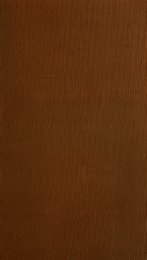Catalog of the Benthic Marine Algae of the ... - SeaweedAfrica
Catalog of the Benthic Marine Algae of the ... - SeaweedAfrica
Catalog of the Benthic Marine Algae of the ... - SeaweedAfrica
You also want an ePaper? Increase the reach of your titles
YUMPU automatically turns print PDFs into web optimized ePapers that Google loves.
NUMBER 27 81<br />
Order FUCALES<br />
Family CYSTOSEIRACEAE<br />
Cystoseira C. Agardh<br />
Cystoseira hakodatensis (Yendo) Fensholt<br />
Cystophyllum hakodatense Yendo, 1907:32, pi. II: figs. 13-16 [lectotype<br />
locality: Shoya, Japan fide Yoshida, 1980:100].—Cordero, 1982b:33,<br />
fig. 2 ["Cestophyllum"].<br />
Cystoseira hakodatensis (Yendo) Fensholt, 1952:563 ["hakotadense"].<br />
PHILIPPINE DISTRIBUTION.—LEYTE (Leyte del Sur).<br />
NOTE.—The name Cystophyllum J. Agardh (1848:228)<br />
was superfluous when published inasmuch as <strong>the</strong> circumscription<br />
<strong>of</strong> <strong>the</strong> genus included both <strong>of</strong> <strong>the</strong> original species<br />
<strong>of</strong> Myagropsis Kutzing (1843a:57), <strong>the</strong> single original species<br />
<strong>of</strong> Sirophysalis Kutzing (1843b:368), as well as several species<br />
previously assigned to Sargassum C. Agardh (1820b: 1) and<br />
Cystoseira C. Agardh (1820b:50). According to Article 7.11<br />
<strong>of</strong> <strong>the</strong> ICBN, <strong>the</strong> type <strong>of</strong>Cystophyllum is <strong>the</strong> type <strong>of</strong>Myagropsis,<br />
<strong>the</strong> earlier <strong>of</strong> <strong>the</strong> two Kutzing generic names and <strong>the</strong>refore<br />
<strong>the</strong> one that J. Agardh should have adopted. Fucus<br />
myagroides Mertens ex Turner (1809:28, pi. 83) was designated<br />
lectotype <strong>of</strong> Myagropsis by Silva (1952a:279) and is<br />
thus <strong>the</strong> type <strong>of</strong> Cystophyllum. The lectotypification by De<br />
Toni (1891:175), who chose C. trinode (Forsskal) J. Agardh<br />
(1848:230), is irrelevant.<br />
J. Agardh separated Cystophyllum from Cystoseira on <strong>the</strong><br />
basis <strong>of</strong> vesicle position. In Cystophyllum <strong>the</strong> vesicles were<br />
said to be restricted to ultimate ramuli, while in Cystoseira<br />
<strong>the</strong>y are produced within <strong>the</strong> axes. The diagnostic value <strong>of</strong><br />
this character at <strong>the</strong> generic level was doubted by Gardner<br />
(1917:390), who found both conditions in <strong>the</strong> same species.<br />
Fensholt (1952) abandoned this distinction and treated as<br />
members <strong>of</strong> Cystoseira most species that had been placed in<br />
Cystophyllum by J. Agardh and subsequent authors. If Cystoseira<br />
hakodatensis and o<strong>the</strong>r species currently placed in<br />
Cystophyllum are segregated from Cystoseira, <strong>the</strong> segregate<br />
genus cannot bear <strong>the</strong> name Cystophyllum, which, as shown<br />
above, is a synonym <strong>of</strong> Myagropsis.<br />
Hormophysa Kutzing<br />
Hormophysa cuneiformis (J.F. Gmelin) P.C. Silva, new<br />
combination<br />
Fucus triqueter Linnaeus, 1771:312 [type locality: "in Mari Capensi"].<br />
Cystoseira triquetra C. Agardh, 1820b:61.<br />
Hormophysa triquetra (C. Agardh) Kutzing, 1843b:359.—Taylor,<br />
1966b:357.—Papenfuss, 1968:45.—Cornejo and Velasquez, 1972:179,<br />
182.—Trono, 1972a: 102.—Cordero, 1973b:25.—Velasquez et al.,<br />
1973:21, pi. 8: fig. 39.—Ortega, Alcala, and Reyes, 1974:187.—Trono,<br />
1974a: 147.—Velasquez, Trono, and Doty, 1975:150.—Trono,<br />
1976:220.—Cordero, 1976c:20.—Trono, 1978:11.—Cordero,<br />
1979b:286.—Puig and Cordero, 1979:32.—Liao and Sotto,<br />
1980:98.—Reyes, 1980:123, pi. 3: fig. 5.—Saraya and Trono, 1980:33,<br />
pi. X: fig. 3.—Trono and Ganzon-Fortes, 1980:47, fig. [s.n.].—Guz<br />
man, 1981:43.—Laserna et al., 1981:447.—Mefiez and Calumpong,<br />
1981:382.—Laserna et al., 1982:52.—Trono and Ang, 1982:14.—<br />
Hurtado-Ponce, 1983:123.—Marcos-Agngarayngay, 1984a:ll, fig.<br />
8.—Marcos-Agngarayngay, 1984b: 123.—Tungpalan, 1984:143.<br />
Fucus articulatus Forsskal, 1775:191 [type locality: Suez, Egypt].<br />
Cystoseira articulata]. Agardh, 1848:216.—Mefiez, 1961:68.—Velasquez,<br />
Trono, and Doty, 1975:140.<br />
Fucus cuneiformis].?. Gmelin, 1792:1389.<br />
Cystoseira prolifera J. Agardh, 1848:215 [type locality: Western Australia,<br />
Australia].—Westernhagen, 1973a:65; 1974:113 (table I).<br />
PHILIPPINE DISTRIBUTION.—BATANES. LUZON: Ilocos<br />
Norte, Pangasinan, La Union, Bataan, Batangas, Sorsogon.<br />
MARINDUQUE. LEYTE (Biliran I.), PANAY: Aklan. NEGROS:<br />
Negros Oriental, CEBU (Mactan I.), SIQUIJOR. PALAWAN<br />
(Bugsuk I.), SULU: Sulu (Siasi I.), Tawitawi.<br />
NOTE.—Cystoseira articulata is included as a synonym on<br />
<strong>the</strong> authority <strong>of</strong> Setchell (1935:264), C. prolifera on <strong>the</strong><br />
authority <strong>of</strong> Womersley (1964:64). Various taxonomic synonyms<br />
are discussed by Papenfuss (1968), while <strong>the</strong> tortuous<br />
nomenclature is brought up to date in <strong>the</strong> appended Nomenclatural<br />
Notes.<br />
Myagropsis Kutzing<br />
Myagropsis myagroides (Mertens ex Turner) Fensholt<br />
Fucus myagroides Mertens ex Turner, 1809:28, pi. 83 [type locality:<br />
Nagasaki, Japan].<br />
Myagropsis myagroides (Mertens ex Turner) Fensholt, 1955:319.<br />
Fucus sisymbrioides Turner, 1809:150, pi. 129 [type locality: Korea<br />
Strait].<br />
Cystophyllum sisymbrioides (Turner) J. Agardh, 1848:234.—Cordero,<br />
1982b:35, fig. 3 ["Cestophyllum"].<br />
PHILIPPINE DISTRIBUTION.—SIQUIJOR.<br />
NOTE.—While returning most members <strong>of</strong> Cystophyllum<br />
to Cystoseira, Fensholt (1952) retained <strong>the</strong> name Cystophyllum<br />
for a new generic concept distinguished from Cystoseira<br />
by a suite <strong>of</strong> developmental and cytological characters. Only<br />
two species were known by Fensholt to share <strong>the</strong>se characters,<br />
namely, C. sisymbrioides (Turner) J. Agardh (1848:234)<br />
and C. turneri Yendo (1907:40, pi. Ill: figs. 7-11). Upon<br />
realizing that C. sisymbrioides included both <strong>of</strong> <strong>the</strong> original<br />
species <strong>of</strong> Myagropsis, Fensholt (1955) adopted that generic<br />
name for what she had previously designated Cystophyllum<br />
J. Agardh emend. Fensholt. Papenfuss and Jensen (1967)<br />
reviewed Fensholt's work and concluded that <strong>the</strong> segregation<br />
<strong>of</strong> Myagropsis from Cystoseira was advantageous.<br />
The conspecificity <strong>of</strong> Fucus myagroides and F. sisymbrioides<br />
was proposed by J. Agardh (1848:234). Both species were<br />
originally described in <strong>the</strong> second volume <strong>of</strong> Turner s<br />
"Fuci.' If <strong>the</strong>y had been published simultaneously, J.<br />
Agardh would have been free to adopt ei<strong>the</strong>r epi<strong>the</strong>t in<br />
preference to <strong>the</strong> o<strong>the</strong>r. Moreover, his choice (sisymbrioides)<br />
would have been imposed on subsequent workers (Article<br />
57.2). In fact, however, <strong>the</strong> two species were not published<br />
simultaneously. Turner's "Fuci" was issued serially, with 12<br />
parts constituting a volume (see Price, 1984). Although












